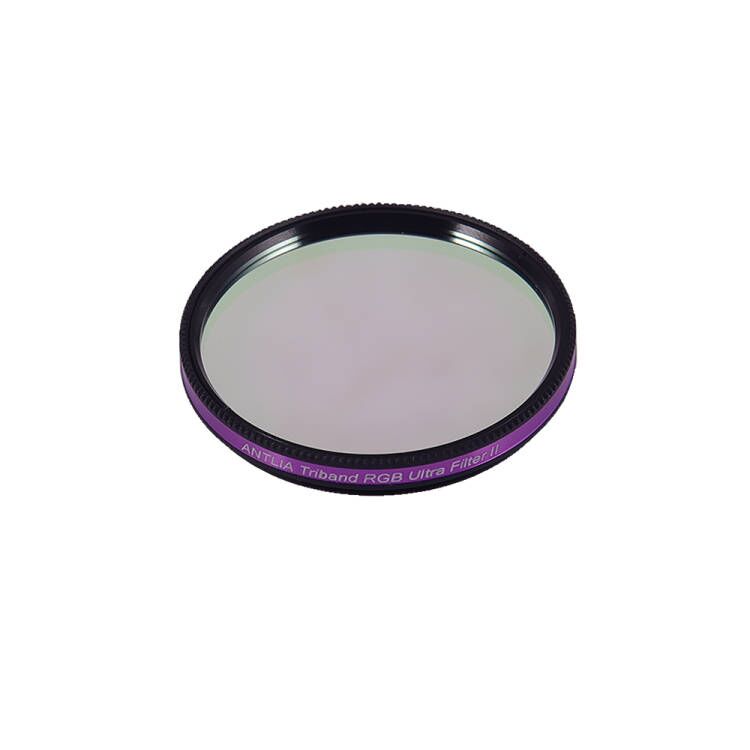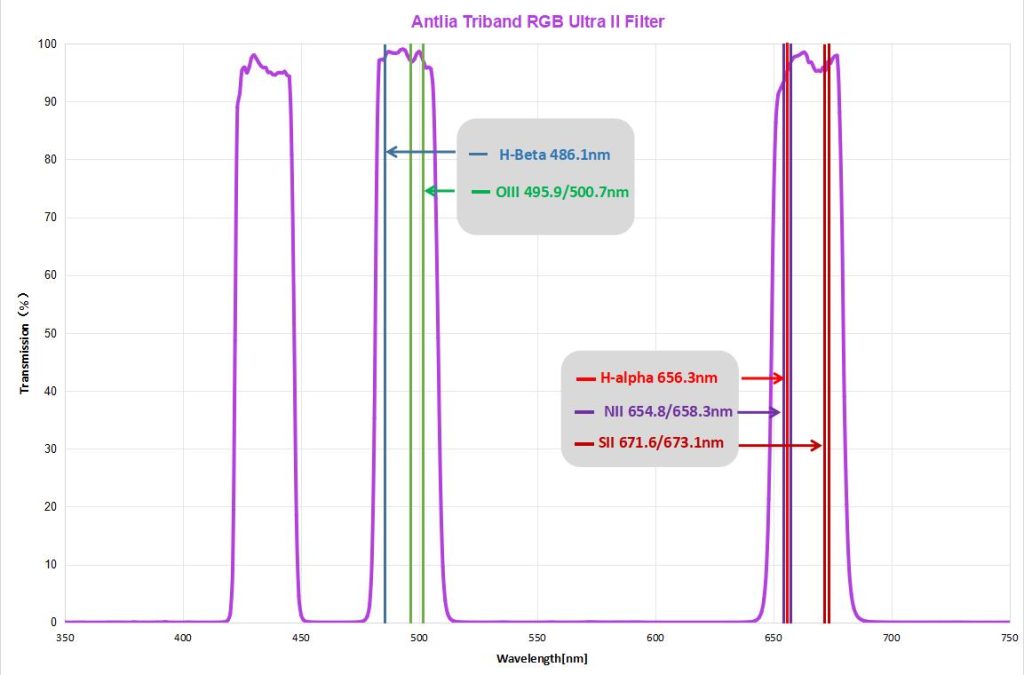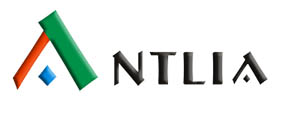The Antlia Triband RGB Ultra Filter II enhances nebula imaging by adding the Hydrogen-beta (H-beta) line at 486.1nm to the existing Triband RGB Ultra design. This addition allows the filter to capture finer nebular details with greater clarity. Antlia engineered this filter for light pollution suppression, making it effective for both OSC (one-shot colour) and monochrome cameras.
Its spectral design focuses on capturing the strongest signals within the RGB bands. As a result, the Triband RGB Ultra Filter II can image over 90% of deep-sky objects, delivering excellent performance on emission nebulae. Unlike typical ultra-narrowband filters, this filter also captures galaxies, reflection nebulae, and star clusters, providing balanced RGB colours even in light-polluted skies—from Bortle 8 to Bortle 1 locations.
Additionally, the filter’s broad bandpass handles fast optical systems with focal ratios as fast as f/2, making it versatile for a wide range of telescopes and setups.
Application and Performance:
-
Captures galaxies, reflection nebulae, and star clusters with ease
-
Features refined coating technology for excellent halo suppression and improved signal-to-noise ratio
-
Designed for balanced colour transmission, drawing on Antlia’s expertise in spectral design
-
Maintains minimal colour cast when imaging broadband emission objects like stars, galaxies, and globular clusters
-
Operates efficiently with optical systems as fast as f/2, with minimal loss of performance or spectral shift
-
Suitable for visual use, offering high transmittance of H-alpha, OIII, SII, and H-beta emission lines through large-diameter telescopes
-
Isolates H-alpha, OIII, and the blue spectrum effectively from background light pollution
-
Provides excellent flexibility, working seamlessly with both OSC and monochrome camera systems
-
Supports imaging of most astronomical objects across various optical setups, down to f/2 focal ratios
-
Works as a luminance filter replacement in LRGB imaging with mono cameras, improving contrast and signal-to-noise ratio for nebulae and galaxies (except when imaging dark nebulae like LDN)




Reviews
There are no reviews yet.